
Jun 2, 2021 | Opinion
By Vared Shmuler (IV)
Over the past several months, Amazon has experienced a prolonged period of persecution due to their alleged violation of antitrust laws. However, before diving into the subject matter, there are several questions and factors that must be addressed. Firstly, what is an antitrust law? Could it be a breach of a contract? Or is it a violation of trust between people? To the surprise of many, the term antitrust is not a cognate. Rather, this term refers to the regulation of the concentration of economic power for a single company, particularly with regard to monopolies. More specifically, an antitrust law can be classified as a statute that is specifically developed by the government to protect consumer interest and to ensure fair competition in any given sector of the American economy. However, in more recent times, Amazon, and their expansive empire of goods and services, has been open to an investigation concerning their treatment of third-party sellers and, more importantly, their possible neglect of antitrust regulations.
Although Amazon is most notably known for their extensive online retail store, they also provide a myriad of other utilities. For example, they deliver their streaming and newly acquired food services via Whole Foods. However, in which of these services could they be persecuted for their violation of terms? Due to the explanation of an antitrust law that states that any company must adhere to non-predatory business practices, Amazon should be no exception. Their mass amount of popularity forces small businesses to use the Amazon platform to sell their product with the hope of sales and publicity. However, Amazon indirectly destroys their business’ credibility and strengthens their undesired dependence on the platform. Not only are these smaller corporations unable to compete with Amazon’s vast online presence, but surcharges and fees ever so slightly pick away at the profits of those that choose to reluctantly comply, further shattering their likelihood of surviving the corporate food chain. Whereas in the sector of streaming services, the situation dilutes. With competitors such as Hulu, Netflix, HBO Max, Disney Plus, and several others, Amazon Video is not at all in control or infringing on the terms of antitrust laws. In short, Amazon’s reign of online services can be limited to only their retail and delivery platform as there are sufficient competitors in all other categories of Amazon’s domain. However, based on the information stated above, the question that remains is whether or not anything will happen to the company of Amazon? Will they be persecuted in a court of law or continue their technological advancements?
Although Amazon’s overall holdings in between sectors balance one another, it does not outweigh the violation within the boundaries of Amazon’s online retail and shipping services. Based solely on the information provided, regarding Amazon’s predatory business practices and methods, I believe that if Amazon is not in violation of antitrust laws now, they will be in the near future. They not only hold the majority of online sales and have millions of loyal customers, but they also create an inhospitable environment for small businesses. They drive away many sales opportunities from the lesser known and have extremely competitive prices, leaving consumers wondering whether or not they should buy the product on Amazon. On a more personal level, I have heard, on countless occasions, questions of whether any given product will be less costly or ship faster on Amazon in comparison to a third-party seller, which, as every member of the clientele knows, is considered impractical. These examples simply show the extent to which Amazon’s influence reaches. In short, I believe that due to Amazon’s predatory business practices that they are in violation of the set antitrust laws. As a result, they will face repercussions for their corporate actions.
Feb 16, 2021 | Opinion
By Vared Shmuler
COVID-19 has had a two-faced effect on the American economy. On one hand, many small businesses and franchises have had to temporarily or permanently close their doors to their clientele; on the other, the pandemic has acted as a catalyst for an array of investment opportunities, particularly in securities and real estate. The U.S. stock market ended 2020 at an all-time high. Even the S&P 500 stock index, one of the most widely-watched gauges for the market, finished the year up more than 16 percent. Investors in the stock market have benefited significantly from the sudden surge, but homeowners and real estate investors have also benefited from the continuous low interest rates implemented by the Federal Reserve.
With the stock market enduring initial volatility during the beginning of the pandemic and finishing up 2020 as a clear bull market, we are left to consider: What about 2021? Will the economy flourish and continue on this unforeseen path, or will a bubble burst, leading the U.S. to reach negative growth and further continue the state of uncertainty?
Anticipating the future requires a deep understanding of the present state of our nation. The United States is still very much plagued by COVID-19. Even after undergoing ten months of a global crisis, we are still at a great risk of a prolonged second wave which will cause the economy to suffer. This could mean a first quarter with negative output growth, which signifies a recession on the horizon. However, due to the recent development and distribution of COVID-19 vaccines, the course of 2021 will likely look more positive. Most states will soon be able to provide the vaccine to the general public, following the decisions made by the governments of Florida, Louisiana, and Texas. Only after these events will the economy begin to recover.
Here’s my prediction: With the rising number of cases and the vaccine only open to a select few, the GDP, which measures the total value of economic output in the country, will decrease. However, after more vaccines are distributed and more people are able to receive treatment, the economy will stabilize, but not completely revert to its pre-pandemic state. Even as regulations are relaxed, industries such as hospitality, dining, and cinema have potentially been changed forever. The redistribution of economic power towards other industries, like technology and automobiles, will lead to a “new normal” for the foreseeable future. In summary, due to the recent spike in coronavirus cases counterbalanced by the distribution of vaccines, we should expect an economic dip followed by a recovery.
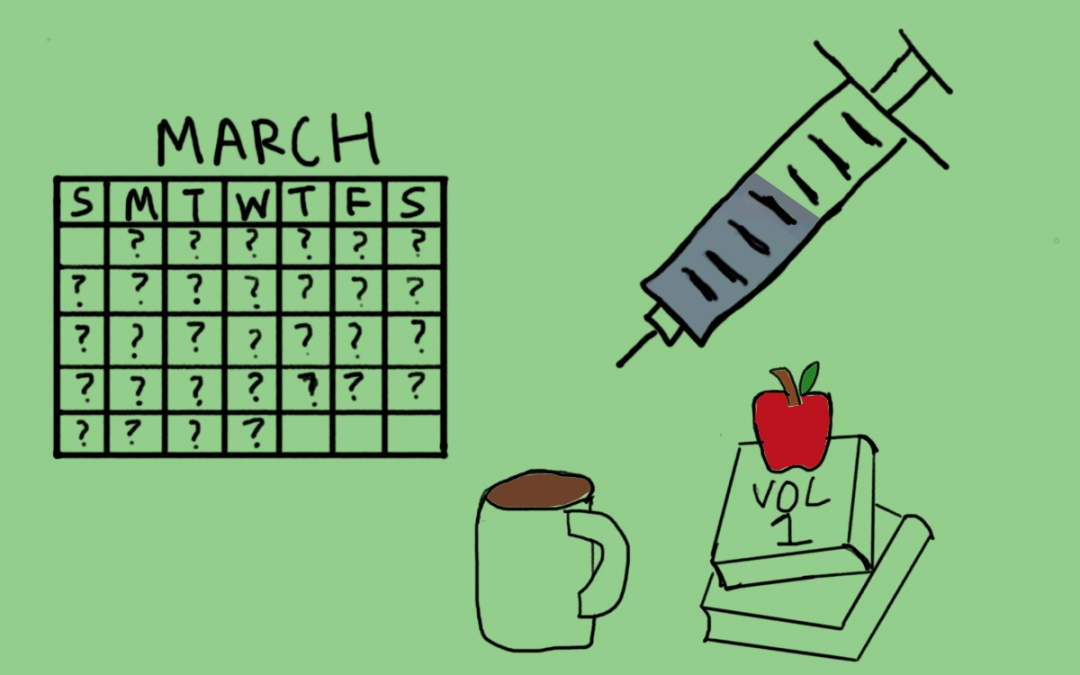
Feb 16, 2021 | Opinion
By Caleb Park (IV)
So far, the COVID-19 vaccine distribution in New Jersey has been a complete mess. While some people are being denied their vaccines, others have been registered twice due to system errors. Distribution centers are running out of vaccines, hotlines are being overwhelmed, and one hospital in Flemington even gave out vaccines to high-paying donors. With the amount of resources that the American medical and pharmaceutical industries have, how did we get in such a perilous situation?
Along with the chaos that comes with state-level organization, New Jersey Governor Phil Murphy has not handled the situation well, to say the least. Instead of focusing on the thousands of deaths, Murphy has prioritized marijuana legalization and clean energy. Although “100% clean energy by 2050” is a nice goal, there are more pressing issues that need to be handled.
The current rollout strategy for the vaccine distribution uses the covid19.nj.gov website to direct people to different resources and register for the vaccine. Patients then receive doses at specified locations. The website and the distribution infrastructure have failed several times due to website issues, human error, and resource management. Unsurprisingly, many senior citizens have been unable to navigate the small-text and cluttered website, with more than twenty links on the home page. The people eligible to receive the vaccine are separated into “phases,” with people who have more urgent work and health situations being placed into early phases. Phases 1A and 1B consist of healthcare workers and high-risk patients. But where are the teachers?
Let’s make this clear: teachers are essential workers. They guide and teach kids despite the challenges of the COVID crisis. However, teachers are in a very unique position. They have arguably one of the most high-risk jobs out of all essential workers. Contrary to delivery drivers or agricultural workers, who might interact directly with only a few people every day, in-person teachers are constantly interacting with students and other faculty members. This argument is not to discredit the huge risks that other essential workers are making, but teachers definitely have a higher risk of exposure to COVID. Although the Murphy administration has plans to accommodate essential workers in the next phase of vaccine distribution (Phase 1C), there is no planned date or finalized method of action. Teachers and school faculty should be accommodated into the current phase of COVID vaccine rollout, or at least implemented into the distribution system as soon as possible.
Vaccinating teachers would not only allow their risky situation to be put to rest, but it would also allow schools to function more smoothly. First off, students would have less risk of exposure to COVID. Although students probably have more exposure to other students than their teachers, teachers are constantly shifting between classes and groups, making it easier for the virus to spread in-between classes. Teachers also interact with students individually, making it easier for them to be a liaison for the virus to spread. Although Pingry has done an excellent job at trying to prevent the spread of COVID as much as possible, it is not completely foolproof. Also, other schools are definitely not as fortunate when it comes to exposure prevention. Vaccinated teachers would also allow more teachers to be present at school, making for a much more productive school environment and making a step towards a fully in-person school once again.
With all the effort put into developing and producing large amounts of the vaccine, the last step should be to successfully vaccinate the right people in order to finally flatten the curve. In such a high risk environment that is school, it is only logical that teachers and faculty should be vaccinated as soon as possible in order to stop exposure to students and their families.
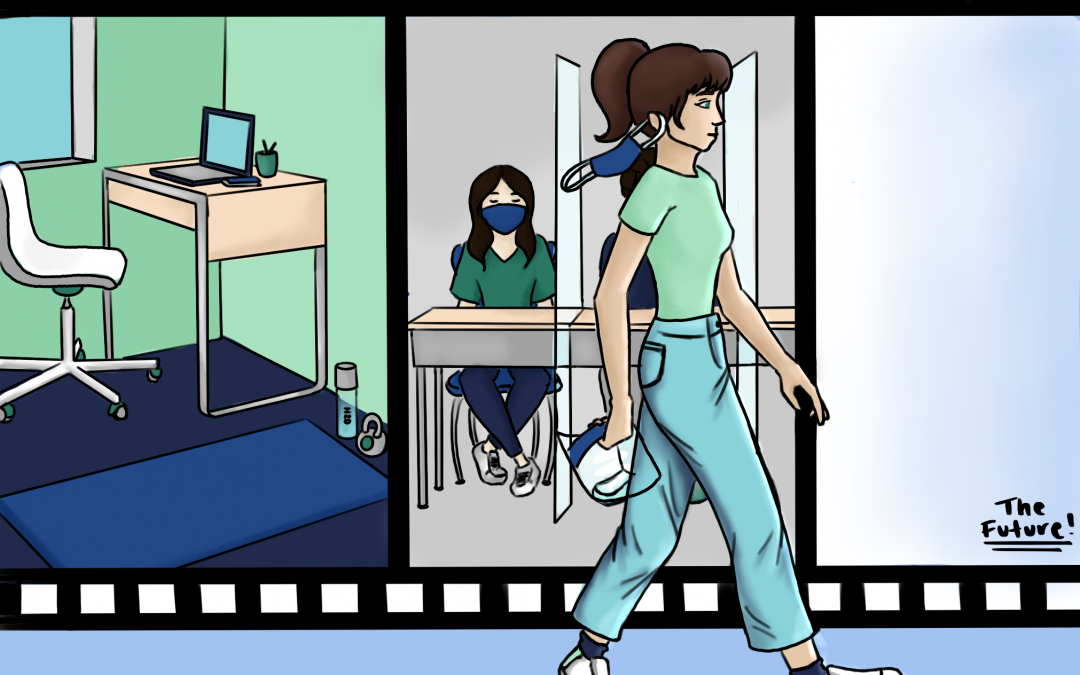
Feb 16, 2021 | Opinion, Sarah Kloss
By Sarah Kloss (V)
When reminiscing about a time before masks and social distancing, I think back to the Model UN trip right before lockdown. Actions like packing 30 kids into an elevator or gathering in groups to discuss resolutions seem almost unimaginable nearly a year later. The possibility of students from all over the country and the world coming together at a convention now feels shocking and is a reminder of how much the world has changed. Even before the trip, the virus had already begun to have an enormous impact on my life. A couple of days before I went to New York for the trip, I learned that the French exchange program that I planned on attending was canceled because of positive COVID-19 cases in Lyon, France. I was surprised and confused because I didn’t think that the virus was serious or dangerous enough to warrant the program’s cancelation. Disappointed but yet to grasp the severity of COVID-19, I continued to enjoy the weekend in New York. It wasn’t until the first week of spring break that I finally understood the full impact of the virus. While I was excitedly packing for a vacation, I learned that New Jersey had declared a state of emergency due to COVID-19 cases. Not long after, we received an email from the school announcing its transition to remote learning. At that point, I was scared and concerned for the future, but what followed in the next few months has completely altered my outlook on the world.
There are many life lessons that I learned from the pandemic. First, I now understand that family and friends are the most crucial things in my life. Before the pandemic, it was hard to find time to spend together as a family, as a result of our busy lives. Now, through having much more time with my family, I learned to cherish the moments we have with each other. Additionally, I now value the interactions I have with my friends more than I did before. During the shutdown, it was difficult for me not to see any of my friends in person, and although we would still text and FaceTime each other, it was nowhere near the same experience. Being back in-person for school, I have grown to appreciate every moment I spend with my friends. I have also discovered how to adapt to changes and become more flexible. Not everything will go the way we want it to, but we can still make the best out of the situation. Although my global program to France was canceled, I had the opportunity to participate in a virtual global program about the Balkans during winter break. While I was disappointed that the Model Congress trips were canceled this year, I was still fortunate enough to participate in the Virtual Model Congress held for the first time. Also, I learned how to cherish the small things in life and not take anything for granted. When New Jersey was in lockdown, the one thing I missed the most was playing tennis. All the tennis courts were closed and I missed the routine of playing. Because of this, when the tennis courts finally reopened, I valued being on the court much more.
I am incredibly grateful for what Pingry did over the summer, from installing the filtration system to putting up PlexiGlass dividers, so that we could come back to school for in-person learning in the fall. I could finally see my friends and teachers again, and I could play tennis for the school (something that I wasn’t sure would happen). Looking at the graph of the new COVID-19 cases both in New Jersey and the United States, I am incredibly grateful that the vaccine has come out and cases are now trending downwards. Even when the pandemic is over, I will always remember the lessons it taught me, and I look forward to squeezing in an elevator with 30 kids again.
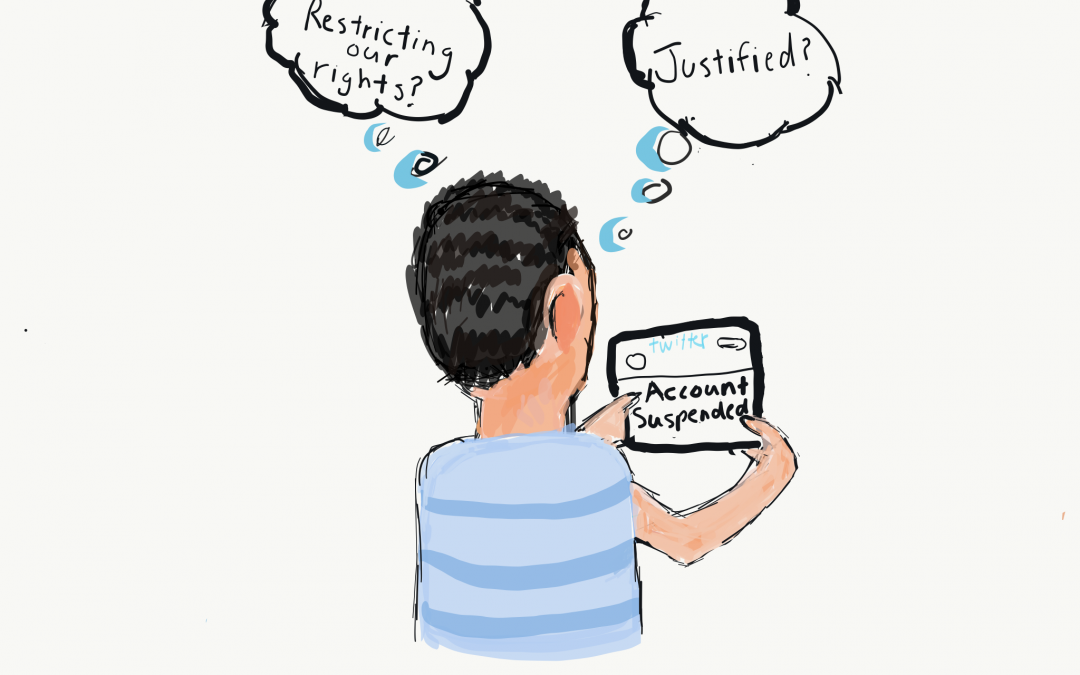
Feb 16, 2021 | Andrew Wong, Opinion
By Andrew Wong (V)
Over the summer, like many of my friends at Pingry, I watched The Social Dilemma on Netflix, a documentary exposing the inner workings and dangers of social media and surveillance capitalism. Perhaps I was naïve at the time, but after watching the show, I still felt that social media was not a clear and present danger to our freedoms in this country. A negative social influence? Perhaps. Issues with user data and security? Certainly. But not a serious threat to society and civil rights.
However, in the wake of Capitol violence motivated by online actors, former President Donald Trump’s ban from every single social media platform on allegations of “incitement,” and thousands of other bans being handed out to conservative influencers, it is clear that the issue of social media needs to be addressed. Social media can be a force for good, helping to connect people from all over the world and allowing for immense information sharing that human history has never seen before. But on the flip side, it can also be used to facilitate illegal activities, share illicit material and content, curb free speech, or change the minds of millions with misinformation and propaganda. So how should social media be regulated in order to continue being a force for good, while also protecting our right to free speech and keeping unwanted actors out?
Presently, all social media in the United States is regulated under Section 230 of the Communications Decency Act of 1996. Section 230(c)1 grants social media companies legal immunity from whatever content is posted on their platforms, and makes it so that social media companies cannot be held liable for what is said and done by users, even if said actions are illegal. The second portion of the law, Section 230(c)2 provides immunity from civil liabilities for information service providers that remove or restrict content from their services they deem “obscene, lewd, lascivious, filthy, excessively violent, harassing, or otherwise objectionable”, as long as they act “in good faith” in this action. In essence, platforms cannot be held liable for violating the free speech of users by removing content.
However, while Section 230 has allowed social media companies to expand and flourish without fear of legal repercussions for moderating what is posted on their platforms, it’s also presented many moral questions. For example, should illicit material or content that inspires violence or terrorism be allowed to be harbored on social media platforms with no repercussions whatsoever? Or what about the flip side of the coin, in that we’ve essentially given so-called “Big Tech” a free hand to play judge, juror, and executioner when it comes to free speech in the twenty-first century public square?
How should Section 230 be changed to try and remedy these issues? Democrats and Republicans have proposed several solutions. Democrats, most notably President Joe Biden, have supported weakening Section 230(c)1 protections, having stated in a January 2020 interview with The New York Times that “[Facebook] is not merely an internet company. It is propagating falsehoods they know to be false”, and that the U.S. needed to “[set] standards” for what content is and is not allowed on social media. Republicans, led by Senators Ted Cruz (R-TX) and Josh Hawley (R-MO), have proposed legislation limiting Section 230(c)2 protections, clarifying what it means when a platform takes down content in “good faith”, and stripping away immunity for content takedowns, thus allowing users to sue companies over content moderation policies.
Ultimately, effective regulation must address issues regarding illicit content and free speech. Such regulation must establish that content promoting illicit activities (such as child abuse, human trafficking, terrorism, and cyber-stalking, among others), are illegal on the internet, just like it is in the real world, and platforms will have their immunity stripped if they promote these activites. However, such regulation must also have adequate protections on free speech. This could be accomplished through clarifying the “good faith” clause with specific language, or perhaps writing specific legislation that only allows platforms to take down content when it is blatantly illegal, rather than letting platforms take down content they don’t like to see.
Social media is the public square of the 21st century, and ultimately, everyone should be able to have access to this public square, in keeping with our values of free speech. It is in the interest of everyone that the internet remains a free and open space, but also a safe space where illegal actions are not allowed to persist. Effective and smart regulation, accomplished via updating Section 230, would be an easy way to create an open and safe environment on all social platforms.
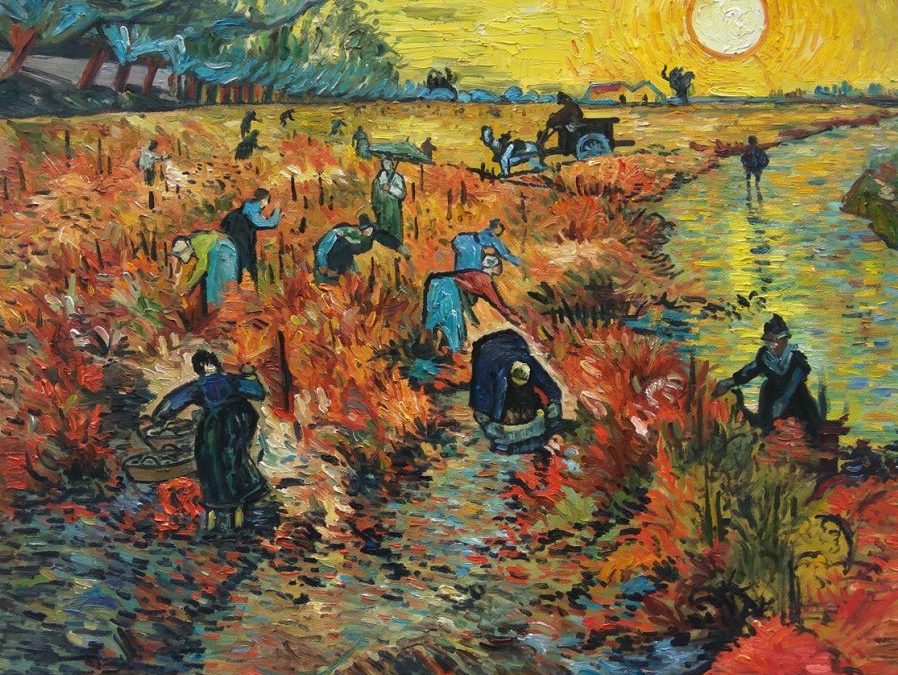
Feb 16, 2021 | Opinion
By Carson Shilts (VI)
Art has always been very timely in that one can easily identify the time period of a painting based on its style; and up to this point, artistic movements are usually the byproduct of a shift in social and political climate. For example, expressionism was a result of the horrors that people endured during the eras of World War I and II, as expressing oneself through abstract artistic representations allowed a sort of solace. Popular art today is difficult to define because it is seen as a mixture of many different art movements, while still creating a collective. Artists have seemed to discover that, in order to create something new, one does not have to forget the past—rather, one ought to be inspired by it. This ideology has allowed for new art movements to emerge as a result of previous art movements. It takes time, however, for a new style to become established and en vogue. Artists whom we now consider pioneers and geniuses were rejected in their times. Vincent Van Gogh, for example—an artist who we now consider one of the greatest painters of all time—only sold one painting during his lifetime, and was rejected from multiple exhibits. So, what can we take away from this progression of rejection and then later glorification? I believe that the way people treat art can be paralleled to the way in which people treat progressivism as a whole.
Historian and author Timothy Snyder wrote, “It is those who were considered exceptional, eccentric, or even insane in their own time . . . whom we remember and admire today.” This holds especially true as we look back again on those great pioneering artists like Vincent Van Gogh, Edgar Degas and Claude Monet. The rejection of their work and, in a sense, their ideas alienated them from society. It is a toxic trend among humans to shy away from change and to stifle anyone who dares disrupt our seemingly complete knowledge of the world. As a result of this, innovative minds are shunted into a corner where their ideas are only spread to a closed group of like-minded people. Rejection is exhausting and to put oneself out there repeatedly, only to be criticized, especially on such a personal matter as art, would no doubt drive someone to madness.
However, it is this small group of pioneers that truly hold the power. As Michael Leja writes, “The success or failure of works of art in targeting cultural pressure points may be registered in the volume of attention they receive.” Instead of feeling guilty for liking a painting that doesn’t line up with the current, conventional standards, perhaps one should just purchase it, and display it proudly in one’s home. The success of a movement is dictated by the support it generates from society. This support can be contagious, and it can show that a standalone artist isn’t insane or eccentric anymore, and rather, they are accomplished and heard. This is how movements spread, grow, and evolve.
This doesn’t just apply to art. Progressive ideas are ever-flowing, and it is important that we find what we believe in and present it to the world, just as you would a controversial painting, because the artist, activist, politician, writer, or scientist, will never be regarded with respect until they are publicly discussed. This discussion allows room for growth from all people, as it encourages others to speak up, other perspectives to be heard. Think of the world as a never-ending discussion; artists, writers, and just about everyone else are constantly discussing, waiting for the world’s response. So, to put it simply, listen and respond.
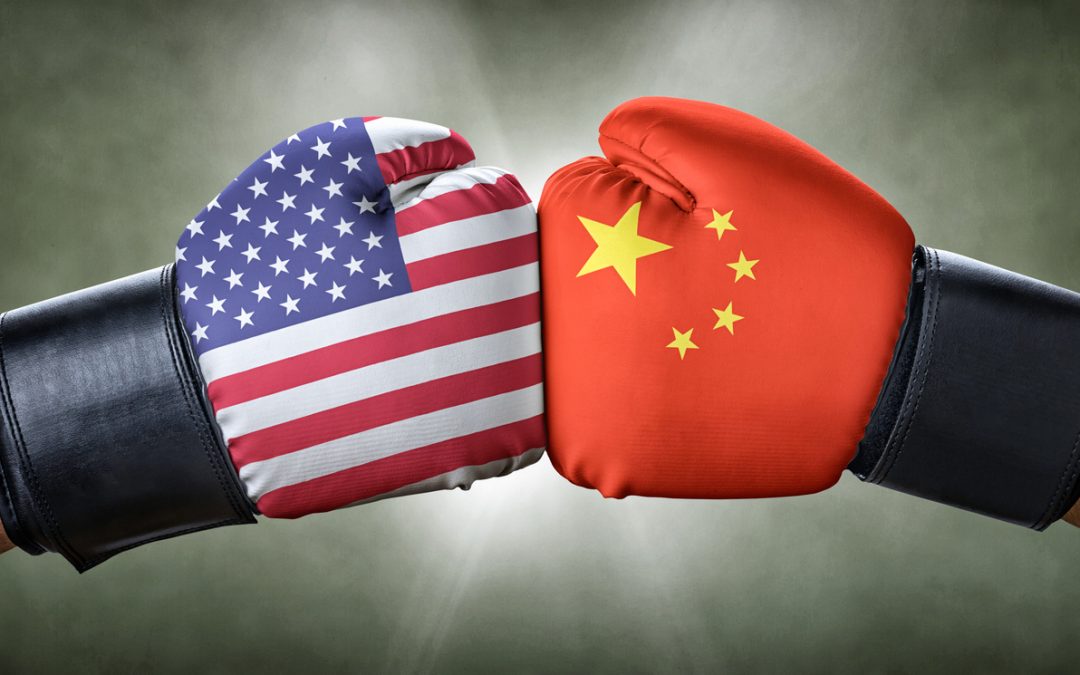
Dec 11, 2020 | Andrew Wong, Opinion
By Andrew Wong (V)
In 1991, with the end of the Cold War and the collapse of the Soviet Union, many American foreign policy scholars (most famously Harvard political scientist Francis Fukuyama) believed that the millennia of sociopolitical conflict between nation states that had defined human history were over, and that humanity had come to accept liberal democracy as the final form of government. Fukuyama argued in his book, The End of History and the Last Man, that from 1991 onward, history would be incredibly “boring,” as democracy spread around the world and human conflict would be reduced to little more than squabbles between democracies over trivial matters of trade and economics. Indeed, Fukuyama’s hypothesis held up for nearly a decade. According to Pew Research Center, democracies made up approximately 36% of nations in 1990. By the year 2000, 63% of nation states were democracies, and the number was only increasing as old authoritarian regimes crumbled and democracies came to replace them. Inter-state conflicts were, arguably, nowhere to be found. Indeed, with a new millennium upon us, it appeared that the era of great power conflict was over, and that freedom and liberal democracy would ultimately triumph over authoritarianism in every corner of the globe.
Fast forward two decades.
If there ever is to be an end of history as defined by Fukuyama, the events of the last twenty years prove it will not occur in the 21st century. The percentage of democracies around the world has shrunk from a high water mark of 64% in 2006 to around 50% today. Liberalism itself has struggled to adapt to the complexities of the times, especially during the COVID-19 pandemic, as we see democratic nations struggle between balancing freedom and their citizens’ health while authoritarian states tout their success in combating the pandemic by completely suppressing their citizens’ basic freedoms.
Along with exposing major flaws within liberalism, COVID-19 has accelerated the start of a power competition between a liberal United States and illiberal Communist China. If there was any hope left for detenté between these two nations prior to the pandemic, COVID-19 has completely killed that off. The symptoms of this new conflict are all here: the end of a free Hong Kong, the U.S. government’s attempts at banning TikTok and other Chinese social media apps, the Chinese government’s encroachment upon the sovereignty of various Indo-Pacific nations, the beginnings of a 5G and AI technology arms race; the list goes on and on.
The recent release of the State Department’s policy planning paper, The Elements of The China Challenge, not only serves as additional confirmation that a new reality of a great power competition is upon us, but it also provides a framework for how America’s foreign policy should be modeled in the years to come if we wish to defend the global liberal status quo against a belligerent Chinese government. To that end, it identifies several objectives the United States must accomplish, namely:
- The United States must be prepared to maintain freedom and democracy at home and abroad amidst the challenges of the Twenty-first Century.
- The United States must cooperate with its allies in order to preserve the free, open, and rules-based international system that has guaranteed freedom, peace, national sovereignty, and human rights since the end of World War II.
- The United States must educate American citizens about the scope of the China challenge, while also training a new generation of American students capable of not only understanding Chinese language and culture, but also the languages and cultures of other friends or adversaries.
The reality of this new global paradigm for us Gen Z-ers is a sobering one. The chapter of world peace created by the triumph of liberalism in 1991, which endured throughout our childhoods, has been shattered by the COVID-19 pandemic and left liberalism bruised and battered. I believe a new chapter of history is beginning as you read this very article, and it is not one of peace, but of great conflict between the United States and Communist China.
Our childhoods are over. I don’t think there will be peace in this world until one side wins in this new Cold War. Rather, I believe that as the pandemic subsides, we now live in the shadow of the US-China conflict, which will come to define the 21st century forever.
The Founding Fathers coined the phrase “United We Stand, Divided We Fall”, and I believe their words could not be truer today. If we continue down this path of great division, be it Democrat vs Republican, Rich vs Poor, Old vs Young, divisions that have already tested liberalism to its very brink amidst the chaos of the pandemic, our nation will fall as the great empires of antiquity did. I feel that we must, for our sake, for our children’s sake, find a way to mend these divides that continue to rot the very foundations of America each and every day. Only then can we firmly defend liberal democracy and finally condemn authoritarianism to the scrap heap of history where it deservedly belongs.
If government of the people is truly humanity’s destiny, I think that the events that occur in the years to come will either make or break that truth. Let us endeavor to ensure that this belief is correct.

Dec 11, 2020 | Opinion

By Carson Shilts (VI)
Growing up, I never wore dresses. I wouldn’t even wear shorts that went higher than my knees. I shopped in the boys’ section and stayed far away from anything that was remotely considered “girly.” Looking back, I realize now that I did this because I grew up seeing how men were given more opportunities and respect, and I, too, longed for that power.
It was easy to feel masculine at my all-girls school, where tom-girls were viewed the same way as boys, but when I came to Pingry, I had to change—a lot. I realized that no matter how much I would try to fit in and change myself, I would never be viewed as an equal. I could make the same jokes, and no one would laugh. I could get the same grades but be seen as less intelligent. I remember talking to my brother at the beginning of my freshman year, and I said, “I wish I could be funny, but people don’t think girls are funny.”
So I stopped talking for fear of being ridiculed, but that wasn’t much better. People assumed I had nothing to say, and soon I began to feel that they were right, as my voice was suffocated in a sea of chatter. I had a friend who was not afraid to speak her mind and use her voice, but she was labeled as bossy. It seemed that there was no right answer. I felt forced into my femininity, and I couldn’t escape it. I started to only spend time with people whom I knew wouldn’t judge me. I enjoyed the things I loved freely until I had to return to reality and hide my passions from everyone. Then, I would hide these things as if they were at risk of being stolen from me by someone who claimed that they “liked” it more. There is an ever-present competitiveness in men and women because when gender roles are assigned to things as simple as liking a particular movie, people flock to protect their femininity or masculinity. The whole idea of categorizing certain hobbies and interests by sex is incredibly restricting on both parties. Still, this constant need to prove ourselves is ingrained within us. It is so much more difficult to be respected by society when you do not fit the ideal form of the gender you were assigned at birth.
Over the years, this antipathy toward my femininity has slowly left. I have learned to reclaim it and make it something I can embrace. Femininity in general, I believe, is being re-evaluated as more and more people begin to define themselves as how they genuinely wish to be defined and perceived. The decision between what makes something or someone feminine and what doesn’t is being taken out of the hands of the late gender-designated world. It is becoming a decision, not an obligation. It is becoming something people don’t have to be ashamed of, but rather can take pride in.
Though there has been progress, the road ahead is long, and there are many other factors in this acceptance and liberation of sexuality that need a lot of attention and work. For example, women of color are held to a much higher standard than white women and are often overly fetishized and sexualized. There also lies a hypocrisy among gender-roles for black women as they are expected to be independent and strong, all the while delicate women are idealized. The disparities in how women are viewed versus their expectations from society are abundant. Gender-roles and sexism continue to dominate society and will do so until we first learn to fight for equality among all women.
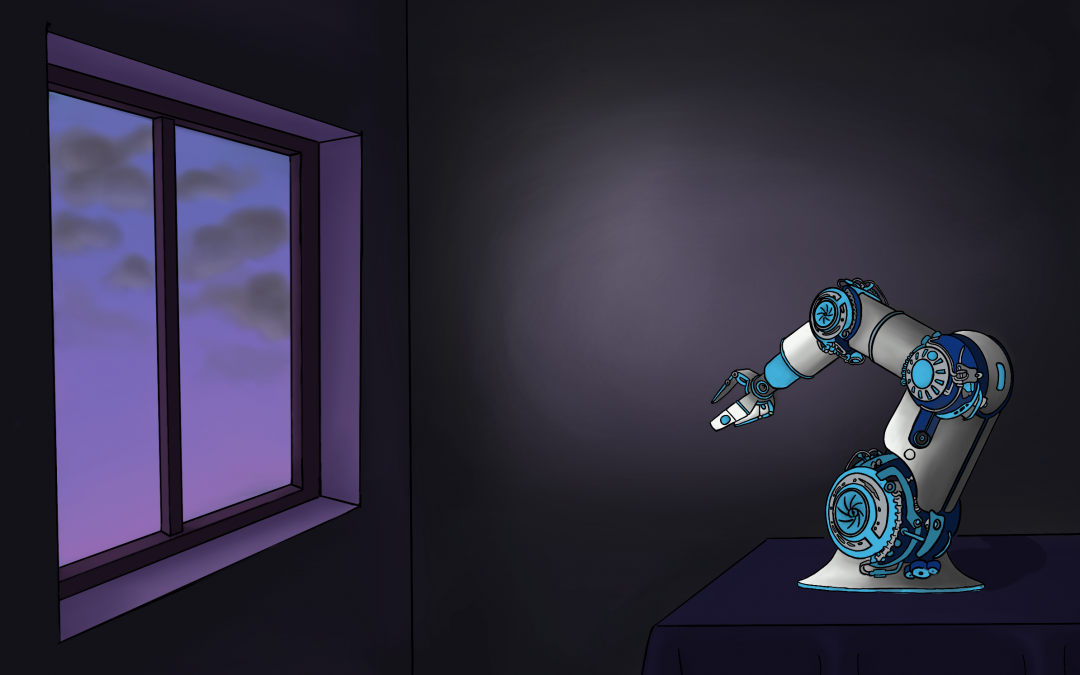
Dec 10, 2020 | Monica Chan, Opinion
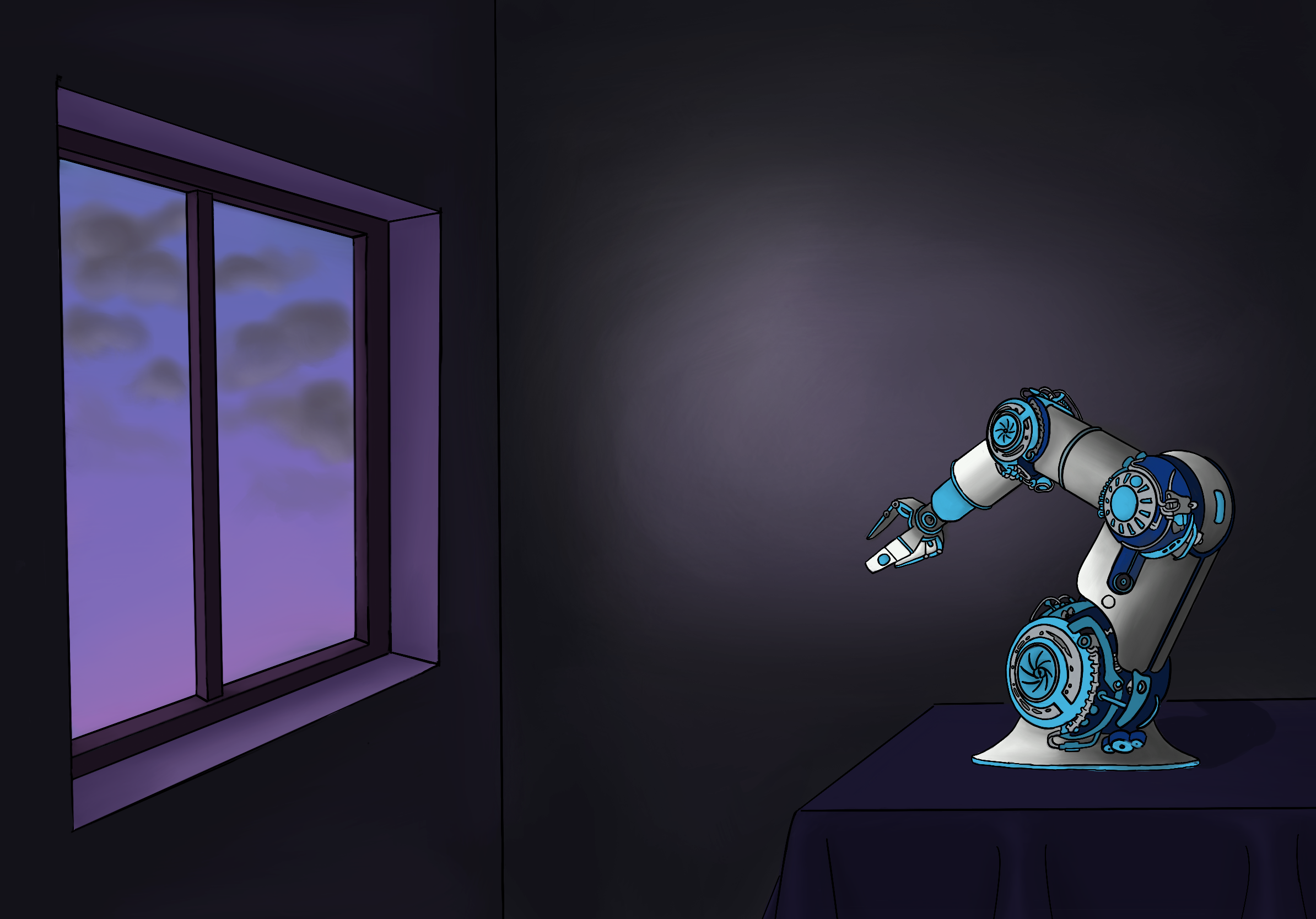
By Monica Chan (VI)
On Friday, the thirteenth of November, I had a free period first block. My mom told me to “drive safely, it’s Friday the thirteenth.” The night before, our robot had run into a few bugs, so I decided to use my free period to go into school and try some fixes. I was really groggy that morning, bitter about sacrificing the extra hour of sleep I could have gotten as I sipped my coffee driving to school. As I turned on the robot, I posted an annoyed selfie on my private Snapchat story, captioning it, “Why am I here?” I then put my phone down and proceeded to test my code. It was all still normal.
When the announcement was made that we were transitioning to fully remote learning, our robotics team worked in a frenzy. In a blur, we packed away the necessities, and I pulled my car around to the arts wing to load it up with everything we thought we might need in the next month. As I drove out of the familiar Pingry driveway, the sun was just setting, the sky a depressing shade of purplish grey. The time was 4:58, the first day that week I’d headed home before 5:30. It was during that drive home that it all settled inside my mind. I thought back to that picture I had posted on my private story, and a sense of regret swelled inside me. I thought to myself, “This morning may have been my last normal hour of robotics.” That’s when I realized the false sense of security that had brewed was suddenly gone. I felt the bottom of my stomach drop to the floor.
As a junior during the initial lockdown, I thought that at least the 2020-21 school year would be normal. I’d still have a chance to savor that last bit of high school life. I’d treasure it. I wouldn’t complain again about the long hours and the late nights. Yet, as school started, we all fell back into the pattern of complaining about our coursework, the face shields in AP Physics, and how Computer Science now took second lunch. We droned on the things we had all missed about being at Pingry. We hadn’t savored it, even though we had all said that we would. We became absorbed in ourselves again. Returning to school gave us a false sense of security about high school and our stay there. All too soon, the awe of our return wore off and we returned to our normal habits and dreaded class. My annoyed expression on my story exemplifies that idea. In retrospect, I regret posting it, and complaining about the extracurricular I had so sorely missed during the full lockdown.
Friday, November 13th, 2020. We all knew something unlucky was going to happen, but it wasn’t the fact that Pingry closed. It wasn’t the fact that our team was going to miss our robotics competition, or that Form VI would miss our in-service day the next Monday. It was the universe telling me I hadn’t kept my promise. It was showing the entire community how delicate our bubble really is, how fast it can all evaporate.
The robot sits near my workspace in the kitchen now, along with boxes of materials that we still have labeled from our trip to the 2019 World Championships in Detroit, a much simpler time in retrospect because we didn’t have to savor it as we had promised to do now. The robot is a physical reminder of the normalcy of school that I try to emulate at home, just like the rest of us are attempting to build our own Pingry bubble at home. Except there’s no laughter from my team, no frustrated sighs when the machines don’t work, no amusing confused expressions of the freshmen when code doesn’t work as expected. And that gap can’t be filled when we are remote. You can’t reform a bubble when it is popped; you can only blow a new one.
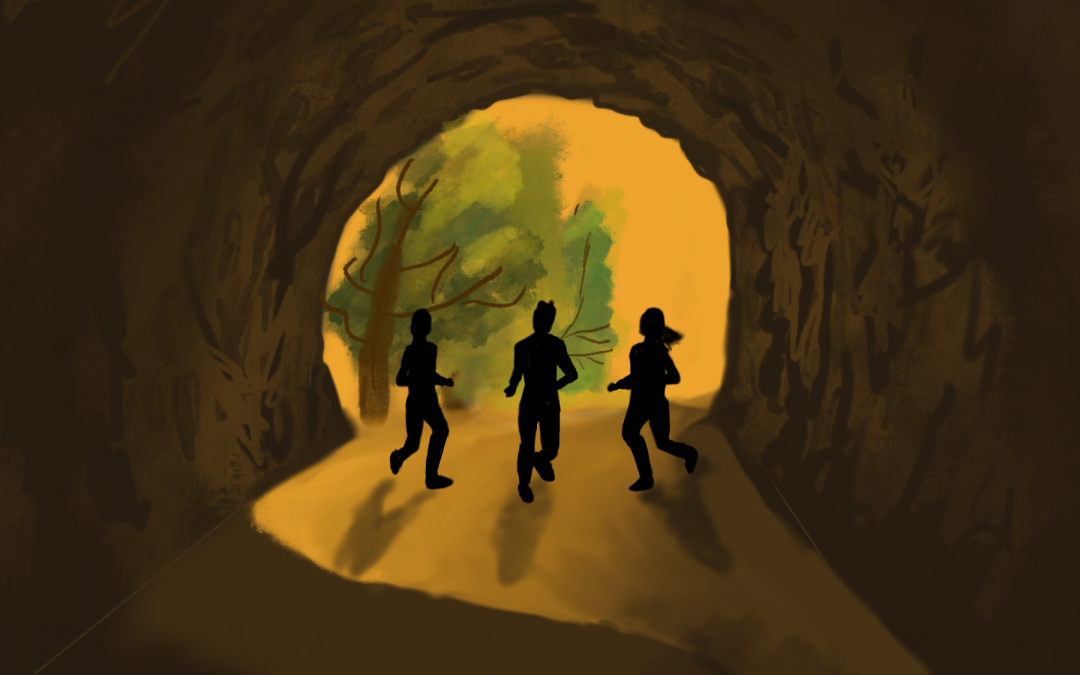
Dec 10, 2020 | COVID-19, Emma Drzala, Opinion
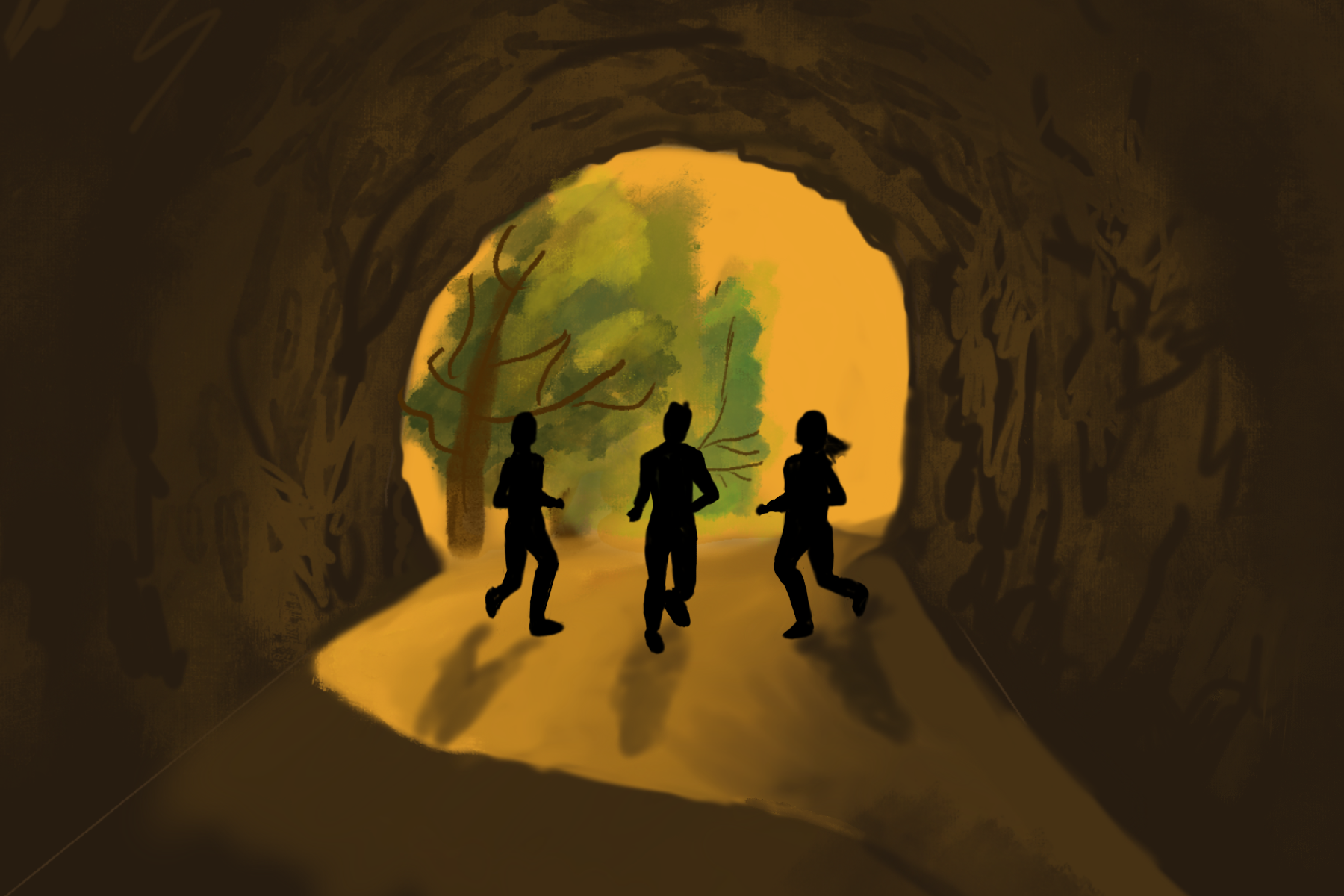
By Emma Drzala (V)
March 13, 2020: a day that will never be forgotten, not only at Pingry but across the nation. On that day, Pingry students were celebrating the news that school would shut down for a couple of weeks following spring break, as a result of the COVID-19 pandemic. Everyone was naïve to the situation around them; nobody could truly predict what was to come. We all thought we would be back in school by April or May, and that the shutdown was just a two-week extension to our break. We all gleefully walked out of school, not knowing that we would not return for half a year.
Two weeks turned into a month. A month became three months. School got out. Summer passed. Still, no end to the pandemic in sight. We came back to school with masks and shields. Still, no sign of the pandemic being over.
Just as we were prepared to give up all hope and accept the fact that the pandemic was our new normal, and that we would forever be confined behind our masks, shields and plexiglass prisons, Pfizer Pharmaceuticals announced a groundbreaking development on November 9th: they had finished developing a vaccine with a 95% effectiveness rate.
After the initial excitement surrounding this positive news died down, my mind bustled with questions. I wondered when the vaccine would be available to the general public, how many people would actually trust its reliability, but most importantly: would life finally, after so many agonizing months of quarantine, return back to normal? Would I finally be able to walk into school without scrambling to finish my pre-screening form? Could I finally eat lunch with my friends without being reprimanded for sitting less than six feet apart?
Although on first thought, the vaccine seemed to be the ultimate end-all for this virus, I realized that this was simply wishful thinking after months in quarantine and away from my friends.
We have to acknowledge that a vaccine may not live up to the hefty expectations the American public has placed on it. There is a high probability that mask-wearing and social distancing measures will still be enforced. During this pandemic, I have longed for a return to school in-person, and the empty and frankly depressing experience of online learning has only cemented this desire even more. The media and our politicians love espousing how the COVID vaccine will prove to be a silver bullet to the entire pandemic and ultimately, this mess of a year. But, let’s be pragmatic here. I do remain optimistic that this vaccine will bring back a degree of normalcy to our lives. Having a portion of the population, especially our most vulnerable citizens (seniors, frontline workers, doctors, etc.), will significantly mitigate the most serious risks of the disease. But with such limited distribution currently, this vaccine is no magic wand. If we take a look at the maladies of history that humanity has successfully defeated, such as polio, measles, and smallpox, nearly 80% of the population had to be vaccinated or develop immunity in order for these diseases to be vanquished. If we are to reach the said 80% of herd immunity, issues with storage and production, along with a sizable population of Americans unwilling to take the vaccine due to its experimental nature, will persist for weeks and months after the vaccine first comes out. These issues certainly hamstring our efforts, leaving a significant portion of the population vulnerable for quite some time.
So as pharmaceutical companies and the FDA begin the long-awaited distribution of vaccines, we must not fall into the trap of believing that we are entirely done with this horrible virus. Yes, there is a light at the end of the tunnel, and it is a miracle of science that American pharmaceutical firms have been able to develop the vaccine in such a short period of time. It is tantalizing to let down our guard at this juncture. But we cannot. We must be aware that until virtually every person in the United States has received the vaccine, COVID and the resulting regulations we have come to loathe this year will still linger. So let’s stick to these rules for just a couple more months and not let our guard waver. We have been forced to endure these rules for a year already, so several weeks will not hurt. We will be back together soon with our friends, under the sun, with no masks on and not socially distanced.
We are almost there. We just need to keep it together for this final sprint. Wear your masks. Spread out. Stay safe. There is finally a light at the end of the tunnel.












